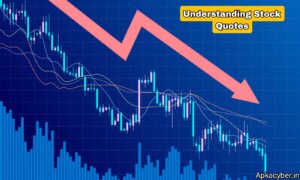
In the fast-paced world of finance, stock quotes are essential for investors and traders alike. Whether you’re a seasoned trader or a beginner looking to understand the stock market, knowing how to interpret stock quotes can significantly impact your investment decisions. In this article, we’ll explore what stock quotes are, how to read them, and why they matter in the realm of investing.
What is a Stock Quote?
A stock quote is a summary of a stock’s current trading price and key data points. It provides real-time information about a company’s stock, including its current price, previous close, bid and ask prices, trading volume, and more. This information helps investors gauge market sentiment and make informed decisions.
Key Components of a Stock Quote
- Current Price: The most prominent part of a stock quote, this indicates the latest price at which the stock was traded. It’s essential for determining whether to buy or sell.
- Bid and Ask Prices: The bid price is the highest price a buyer is willing to pay for a stock, while the ask price is the lowest price a seller will accept. The difference between these two is known as the spread.
- Previous Close: This is the price at which the stock closed on the previous trading day. It helps investors track performance over time.
- Trading Volume: This indicates how many shares were traded during a specific period. High trading volume can indicate strong interest in a stock.
- Market Capitalization: This is the total market value of a company’s outstanding shares and is calculated by multiplying the current stock price by the total number of outstanding shares.
- 52-Week High and Low: These figures show the highest and lowest prices at which a stock has traded over the past year. They can provide context for the stock’s current price.
How to Read Stock Quotes
Reading stock quotes might seem daunting at first, but it’s relatively straightforward once you familiarize yourself with the components. Here’s how to read a stock quote effectively:
- Locate the Ticker Symbol: Each publicly traded company has a unique ticker symbol, which is a combination of letters that represents the company. For example, Apple Inc. is represented by AAPL.
- Check the Current Price: This is the price at which the stock is currently trading. It’s the number that will influence your buying or selling decision.
- Observe Bid and Ask Prices: Understanding the bid and ask can help you determine the best entry or exit points for your trades.
- Analyze Trading Volume: A sudden increase in trading volume can indicate a significant change in market sentiment, so keep an eye on this number.
- Compare with Previous Close: Look at how the current price compares to the previous day’s close to assess the stock’s performance.
- Review Market Capitalization: This helps you understand the size of the company and can influence your investment strategy.
Why Stock Quotes Matter
Stock quotes play a critical role in the decision-making process for investors. Here are a few reasons why they matter:
- Informed Decision-Making: By analyzing stock quotes, investors can make educated choices about when to buy or sell.
- Market Trends: Stock quotes can indicate market trends, helping investors identify bullish or bearish sentiments.
- Investment Strategy: Understanding stock quotes allows investors to develop and adjust their investment strategies based on real-time data.
- Risk Management: By keeping track of stock quotes, investors can manage their risk more effectively, deciding when to cut losses or take profits.
Where to Find Stock Quotes
In today’s digital age, stock quotes are readily available across various platforms:
- Financial News Websites: Websites like Bloomberg, Yahoo Finance, and CNBC provide real-time stock quotes along with analysis and news.
- Brokerage Platforms: Most online brokerages offer real-time quotes, charts, and research tools to help investors make informed decisions.
- Mobile Apps: Financial apps like Robinhood, Webull, and E*TRADE allow investors to access stock quotes on the go.
- Stock Market Indexes: Indexes like the S&P 500 or Dow Jones Industrial Average provide an overview of market performance and can often be found alongside individual stock quotes.
Conclusion
Understanding stock quotes is a fundamental skill for anyone looking to navigate the stock market successfully. By grasping the various components of a stock quote and knowing how to read and interpret them, investors can make more informed decisions, track market trends, and ultimately enhance their investment strategies.
Whether you’re looking to invest in stocks for the long term or trade frequently, being adept at reading stock quotes will empower you to take control of your financial future. Stay informed, keep learning, and watch your investment knowledge grow!